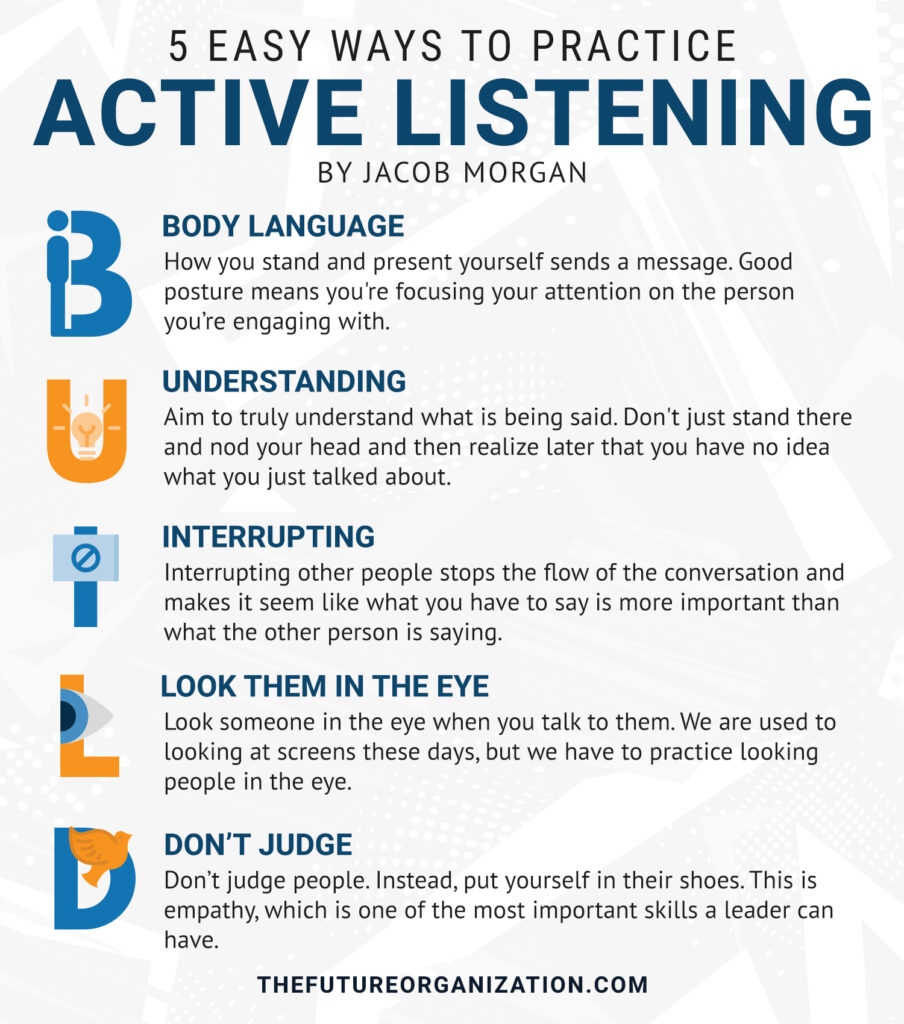When you talk to someone, are you listening or simply hearing?
Hearing is just letting sound enter your ear. It is passive and doesn’t require any effort.
Listening, on the other hand, is purposeful and requires your attention, focus, and effort.
Great leaders must be great listeners. Actively listening to people builds trust, strengthens relationships, and encourages collaboration.
To practice active listening, remember the acronym BUILD:
B: Body Language
How you stand and hold yourself sends a message. When you have good posture and an open stance, it shows you are focused on the person you are talking to and are receptive to their message.
U: Understanding
Listen to understand what is being said. Don’t just stand there and nod your head and then realize later that you have no idea what you just talked about.
I: Interrupting
When you interrupt someone, it cuts off the flow of the conversation and makes it seem like what you have to say is more important than what the other person is saying.
L: Look them in the eye
Eye contact is powerful and shows you are paying attention and valuing what is being said. With as much time as we spend looking at screens these days, it takes effort to actually look people in the eye.
D: Don’t judge
Going into a conversation with a judging mindset can destroy the potential for progress or growth. Instead, practice empathy and put yourself in the other person’s shoes.
Active listening takes work, but if you practice BUILD and improve as a listener and communicator, you will be set up for success in the future of work.

. . .
Now more than ever we need to take a step back to define what it means to be a leader and what great leadership looks like. But this isn’t easy to do. In fact, man business leaders struggle with this. You cannot become and build what you don’t define. In the PDF you will get a framework you can follow and also see how some of the world’s top CEOs define leadership. Click here to get the PDF.

Comments